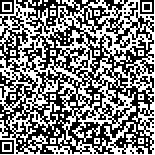下载中心
优秀审稿专家
优秀论文
相关链接
摘要

具有三维结构的非同温地表像元表面热辐射的方向性,取决于像元组分参数,如组分温度,组分发射率,组分结构参数等,而组分的热辐射在组分间的多次散射对像元表面总热辐射方向性的贡献主要取决于像元的几何结构,本文以热辐射几何光学模型为基础,根据多次反弹的原理定量表述了组分热辐射在组分间的多次散射,对随机分布的两且分非同温像元,建立了解析表达的热辐射方向性模型,室内模拟实验室测数据的检验证明了模型的适用性和简单性。
For a remote sensing pixel with 3D surface, the directionality of thermal emission depends on the component parameters of the pixel, such as component temperatures, component emissivities and structural parameters. The contribution of the multiple scattering between components to the directional thermal emission is mainly affected by the 3D structure of pixel. In this paper, we present an analytical model to describe the multiple scattering between components and its contribution to the pixel's emission. The modeling work is based on the conceptual geometric-optical thermal emission model. For the non-isothermal pixel with random distributed components, at the pixel's scale, the openness coefficient and viewing factor is defined, the effect of multiple scattering between components is modeled with the principle of multiple bouncing. Then the directional thermal emission of pixel is derived based on the areal weighted emission of components by taking the ambient radiation into account. The model is validated using measurement data indoor. The two experimental data sets are on different observing object (samples of pingpong spheres and simulated trees made of cotton). Each set of measurement data includes directional thermal emission of pixel, the emission of components, the ambient thermal radiance, and the structural parameters of the pixel. These measured data of components are as input of the model, the brightness temperature of the pixel is calculated. The model predicted brightness temperatures and their comparison with the measured brightness temperature in pixel scale are presented in the paper. The directionality of the effect of multiple scattering is also discussed. The result demonstrates that in pixel scale the analytical model prediction fits the measurement well. Note that in the multiple scattering effect model, when the samples on the background are very close to each other and the viewing facrot VF 2-2can not be ignored, our modeling methodology can still apply. But the results formula will then be very complicated. In such case, a two layer multiple bouncing model would be more appropriate.

